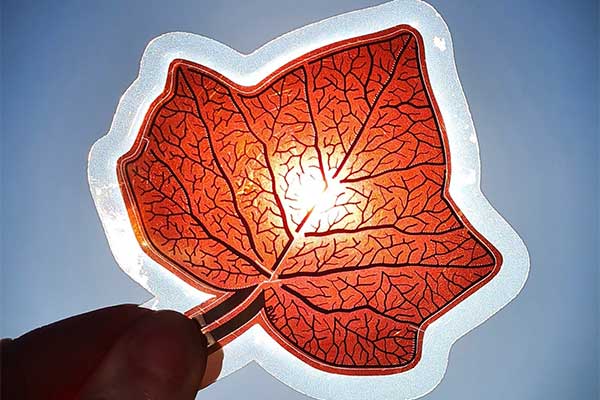Due to the recent improvements in the efficiency with which solar cells made from organic (carbon-based) semiconductors can convert sunlight into electricity, improving the long-term stability of these photovoltaic devices is becoming an increasingly important topic. Real-world applications of the technology demand that the efficiency of the photovoltaic device be maintained for many years.
To address this key problem, researchers have studied the degradation mechanisms for the two components used in the light-absorbing layer of organic solar cells: the ‘electron donor’ and ‘electron acceptor’ materials. These two components are needed to split the bound electron-hole pair formed after the absorption of a photon into the free electrons and holes that constitute electrical current.
In this new study reported in Joule, an international team of researchers led by the Cavendish Laboratory, University of Cambridge, have for the first time considered the degradation pathways of both the electron donor and electron acceptor materials.
The detailed investigation of the electron donor material sets the current research work apart from the previous studies and provides important new insights for the field. Specifically, the identification of an ultrafast deactivation process unique to the electron donor material has not been observed before and provides a new angle to consider material degradation in organic solar cells.
To understand how these materials degraded, the Cavendish researchers worked as part of an international team with scientists in the UK, Belgium, and Italy. Together, they combined photovoltaic device stability studies, where the operational solar cell is subject to intense light that closely matches sunlight, with ultrafast laser spectroscopy performed in Cambridge.
Through this laser technique, they have been able to identify a new degradation mechanism in the electron donor material involving twisting in the polymer chain. As a result, when the twisted polymer absorbs a photon, it undergoes an extremely rapid deactivation pathway on femtosecond timescales (a millionth billionth of a second).
This undesirable process is fast enough to outcompete the generation of free electrons and holes from a photon, which the scientists were able to correlate with the reduced efficiency of the organic solar cell after it had been exposed to simulated sunlight.
“It was interesting to find that something as seemingly minor as the twisting of a polymer chain could have such a large effect on the solar cell efficiency,” said Dr. Alex Gillett, the lead author of the paper. “In the future, we plan to build on our findings by collaborating with chemistry groups to design new electron donor materials with more rigid polymer backbones. We hope that this will reduce the propensity of the polymer to twist and thus improve the stability of the organic solar cell device.”
Due to their unique properties, organic solar cells can be used in a wide range of applications for which traditional silicon photovoltaics aren’t suitable. This could include electricity generating windows for greenhouses that transmit the colors of light required for photosynthesis, or even photovoltaics that could be rolled up for easy transportation and mobile electricity generation.
Thus, by identifying the degradation mechanism that needs to be solved, the current research directly brings the next generation of photovoltaic materials and applications closer to reality.
—
Publication Referenced in the Article:
Alexander J. Gillett & collegaues, The critical role of the donor polymer in the stability of high-performance non-fullerene acceptor organic solar cells, Joule (2023). DOI: 10.1016/j.joule.2023.03.002
This article has been adapted from source material published by University of Cambridge.









Comments